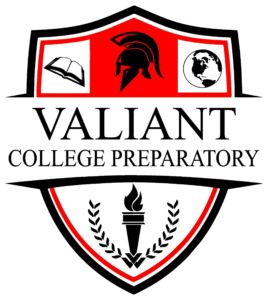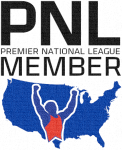8th Grade ELA Syllabus
ENGLISH LITERATURE & COMPOSITION SYLLABUS
COURSE DESCRIPTION
This college-level, full year course is concerned primarily with understanding, analyzing, writing, and rewriting about literature. Referring to the literature studied, students develop both oral and written compositions throughout the year.
The units do not necessarily follow the exact same sequence from year to year, nor are the exact same texts taught every year. Texts are added or subtracted according to various criteria including the interests, strengths/weaknesses, and literary background of each class’s members.
The thematic organization (“The Tragic Figure in Literature”) is broad enough to allow for substitutions and additions.
COURSE OVERVIEW:
- Students may expect to write (and revise/rewrite based on instructor and peer feedback):
- 3-4 papers (3-6 pages each) outside of class
- 5-10 in-class essays (rhetorical or literary analysis)
- 1 literary research paper (8-12 pages) outside of class
- Numerous informal pieces (“write to learn” assignments)
- Reading-journal entries on a continuing basis
- a variety of quiz/short test assignments
- Feedback on student writing
- Instructor’s comments on all papers and direct writing instruction encourage students to:
- Vary sentence length and structure
- Refine word choice and expand writing vocabulary
- Organize ideas logically and make subtle and appropriate transition statements
- Use specific techniques to increase coherence
- Use rhetoric effectively to establish controlling tone and appropriate voice
- Balance generalization and specific, illustrative detail
- Meet one-on-one with instructor to discuss writing assignments, both before, during, and after writing
- REVISE and REWRITE based on instructor and peer feedback
- Instructor’s comments on all papers and direct writing instruction encourage students to:
COURSE PLANNER / STUDENT ACTIVITIES:
UNIT: CRITICAL READING & LITERARY ANALYSIS
Approximate length: To be completed over summer vacation
Major work(s): varies according to student choice
Prior to the beginning of the school year, students are required to choose and read three works of recognized literary merit from the options provided by the instructor (Appendix A). Works are sorted into three categories:
- Works published since 1980
- Works published between 1900 and 1979
- Works published prior to 1900
While reading, students are required to complete a four-page data analysis sheet on each piece of literature to ensure close, critical reading skills encouraging varied approaches such as biographical, formalist, gender, archetypal, psychological and deconstructivist.
UNIT: RESPONDING TO LITERATURE & PERSONAL ESSAY
Approximate length: 2 weeks
Major work(s): NA
After a few days of informal discussion of the summer reading, students begin the year by writing an in- class, timed essay from a past AP prompt, using one of their three summer readings. The assignment is followed by a careful examination of the AP writing rubric for the free-response essay used throughout the year and practice in composing effective statements and applying logical organization in essays.
Students also evaluate released sample responses so that they may practice applying the rubric standards to authentic writing examples. The instructor will also evaluate the essays and include comments and suggestions which address diction, style, tone, voice, and structure. The unit is completed by having students submit college application personal essays. Both types of essays are then reviewed in face-to-face conferences with the instructor. Students are permitted and encouraged to revise and resubmit essays for reevaluation.
UNIT: THE TRAGIC FIGURE IN SHAKESPEARE
Approximate length: 6 weeks
Major work(s): Hamlet by William Shakespeare
In conjunction with reading, viewing and discussing the play, students analyze the work in performance. Students discuss and write extensively about how actors’ and directors’ choices (in films originally intended for the screen and videos of stage productions) impact audiences’ understanding of characters and the play as a whole. Textual and film/video analyses focus mostly on soliloquys. The culmination of the soliloquy analysis assignment is to create a formal oral presentation which compares/contrasts at least two versions of the soliloquy in performance in order to establish the purpose of the soliloquy in terms of Hamlet’s character development, explicate the meaning of the language of the soliloquy, and describe the connection between the soliloquy and the play as a whole. Throughout the unit, students
practice AP-style multiple choice questions based on short reading selections from Hamlet (questions are taken from the Applied Practice book). The unit is concluded with an in class essay using an AP type prompt.
UNIT: THE TRAGIC FIGURE IN THEATRE OF THE ABSURD
Approximate length: 3 weeks
Major work(s): Rosencrantz & Guildenstern Are Dead by Tom Stoppard
Tom Stoppard’s play serves as a useful follow up assignment to Shakespeare’s Hamlet since it uses characters and plot events familiar to the students and presents a comprehensible introduction to absurdist drama. The play, therefore, is read and discussed in class in terms of its adherence to the genre as well as its variation in point of view of Shakespeare’s drama. The unit is concluded with an in class essay using a past AP free response prompt that lists the play as an appropriate text choice (students choose from among several possible prompts).
UNIT: THE TRAGIC FIGURE IN THE ROMANTIC NOVEL
Approximate length: 5 weeks
Major work(s): Frankenstein by Mary Shelley
Students are asked to consider how Mary Shelley treats the classical principles of the tragic figure in her 19th century novel and to what extent the mores of the Romantic era define the tragic condition.
Through writing assignments and class discussion, students study how Shelley’s treatment of ambition, parental responsibility, fate/destiny, dangerous knowledge, and the impact of education do or do not result in the creation of a traditional tragic figure. Students will examine thoroughly, as well as propose and defend in writing what they identify as Frankenstein’s tragic flaw. Students will also complete a creative project in which they examine the novel’s themes and motifs (and connect those themes to twenty-first century concerns and scenarios) through the creation of a mock Facebook page for a character in the novel or create mock text message conversations between characters.
UNIT: THE TRAGIC FIGURE IN RUSSIAN LITERATURE
Approximate length: 6 weeks
Major work(s): Crime & Punishment by Fyodor Dostoevsky
Much of the study and discussion revolves around the social, political, and religious climates portrayed. Regular class discussion derived from students’ reading-journal notes and questions dominates class time. An emphasis is placed on applying a psychological critical approach to the novel as a whole. The unit is concluded with a formal essay; though the prompt is in the style of AP free responses essays, students will have time outside of class to develop and refine their work.
UNIT: POETRY
Approximate length: studied regularly throughout the year with a 3-week concentration in the spring
Major work(s): Michael Meyer’s Poetry: An Introduction
Some poems from the Meyers book have appeared in past AP Exams. Students will also keep a poetry- reading-journal in which they will record initial questions, impressions, and responses to the poems they are reading. For most poems, students will be asked to respond to the following: “Which line(s) from the poem would you most like the poet to explain to you? Put your response in the form of a question.” This prompt is designed to help students develop specific and worthwhile questions for discussion. For the short paper assignment on poetry, students must select a poem from the text or one of their own choosing and they are to write a commentary in which they make judgments about the work’s artistry and quality. In order to do this, students will need to determine the poet’s tone/attitude or purpose for
the poem and then discuss the poetic devices the poet uses to achieve this purpose. Students are to refer liberally to the poem using quotes from the text.
UNIT: THE TRAGIC FIGURE IN MODERN AMERICAN LITERATURE
Approximate length: 10 weeks
Major work(s): Ethan Frome by Edith Wharton, The Great Gatsby by F. Scott Fitzgerald
As students read and study the novels, they are asked to consider the strong influences from Wharton’s and Fitzgerald’s own lives (biographical literary approach) that are reflected in the novels.
Prior to the study of Gatsby, students are asked to lead discussions on one of six topics ranging from Ftizgerald’s biography to cultural aspects of the Jazz Age. As we study both novels, students will evaluate in writing how the works reflect the social, cultural, and/or historical values of their time. In a final writing assignment, students will be asked to consider how the principles of the classical tragic hero are played out against the backdrop of twentieth century American life. Students will be required to draw upon textual details liberally to support their claims.
UNIT: THE TRAGIC FIGURE IN MODERN AMERICAN DRAMA
Approximate length: 5 weeks
Major work(s): A Raisin in the Sun by Lorraine Hansberry
This play is generally read and taught after the AP exam. As we move from the early part of the 20th Century (Frome and Gatsby) to the middle of the 20th Century, students will be asked to consider how the treatment of the American Dream and the idea of the tragic figure do (and do not) change. That is, students will attempt to answer the question: as setting, social class, and race change in a major literary work, how does our conception of what is possible, admirable, and tragic change? Students will research literary criticism of the play as well as of Harlem Renaissance Poetry (including Langston Hughes’s “A Dream Deferred” from which Hansberry borrowed the play’s title). In addition, students will research poverty and race relations in Chicago and other parts of the country leading up to the play’s first production in 1958, seminal court courses that likely informed Hansberry’s writing of the play, and assimilationism as it relates to race in American in the early-to-mid twentieth century. Students will use their research to write about how Hansberry uses her play to explore the social, political, and economic values and concerns of her time.
PERFORMANCE TASKS / STUDENT EVALUATION:
- Reading, responding to, and analyzing novels, drama, fiction, nonfiction, and poetry
- Timed in-class essays based on past AP prompts and Applied Practice literature specific prompts These essays are scored holistically, using AP specific rubrics; some are then peer evaluated to give students a clearer view of the elements required for a high scoring essay.
- Informal writing – short writing assignments designed to allow students to write to understand. These are exploratory activities that enable students to discover what they think in the process of writing about their reading. Sometimes prompts for these assignments are teacher- generated, sometimes they develop from thoughts/questions raised in a student’s reading journal (see Appendix B).
• Tests on books consist of passage-identification questions, true/false matching, and multiple choice items; tests include short essay questions as required of college-level writers. Quizzes on the literary terms found most often on the AP exam.
- Literary analysis papers prepared outside of class (expository and persuasive, at times incorporating research). These papers count more than essays written in class with some grade consideration for properly using internal and external citations. One paper is an analytical essay of a prose passage that requires the student to claim and defend the author’s purpose or tone using textual details for support. The research paper, based on a novel of the student’s choice (British, World or American literature of “recognized literary merit”) is 8-12 typed pages and is equal to two short papers.
- Personal essay
- Reading journal for all reading assignments throughout the year, the journal consists of: reflections on reading, unfamiliar vocabulary encountered, predictions, confusing or unclear literary elements, analysis/judgment, important quotations, recurring themes/motifs, general impressions (see Appendix B)
- Participation in critical discussion
- Student-led discussions
- Oral presentations in the form of analysis and interpretation of literature and poetry


